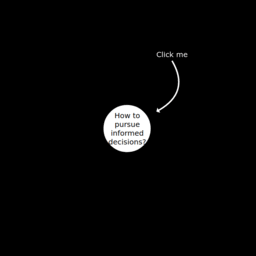
Say you are trying to make a decision with respect to income inequality, climate change, threats to religious freedom, digital divide, or child labor. In order to tackle the complexity of these topics, one of the things you need to ensure is that your facts are indeed correct.
How do you know you have your facts straight? Is your point of view based on correct and complete information?
The spread of false information (deliberate or otherwise) has reached a critical point, threatening global stability, undermining democratic processes, and endangering both public health and the environment. It has the potential to deepen polarization, shift public opinion towards unwarranted distrust in facts and government, and radically disrupt electoral outcomes. As AI-generated content becomes nearly indistinguishable from human-created information—and sometimes even perceived as more credible—this problem intensifies.
Relying on false information getting deleted is insufficient. After removal, data gathering is subject to that same false information being added again. This is, for example, how edit wars start in Wikipedia. There are efforts to maintain fact checking databases for debunked false claims (for instance skepticalscience.com that targets climate myths). However, these are kept in isolation and can’t easily be integrated with your own data gathering.
Data gathering in xplris' platform has a rigorous mechanism for lodging, validating, and recording disputes about factual claims. This way, in addition to just viewing the information itself, our users will be able to see the sources that support the claims and also inspect the review process of that information and validation of any disputes that have ever been lodged. Crucially, the disputed data will never be deleted. The disputed data remains in the record to demonstrate that it has no or low validity.
The last statement is profound in its simplicity. In a narrative form, vandalism is easy. You can add lies over and over again and people have to refute the lies and then delete them. In our representation vandalism becomes harder than correcting for it. Each case of an added lie will be recorded and refuted on its "merits". A repeated addition of the same lie can be deleted with little effort. Effective vandalism now requires the invention of ever new lies "corroborated" with ever new fake sources. This reverses the dynamics of misinformation and truth, and breaks the so-called “Brandolini's law”.

Design of the proof of principle foundation elements is complete. We have implemented a linked object representation of historical entities with source data, maps, a timeline and basic edit and visualization capabilities.
The prototype is not public, yet. If you are interested, we can arrange a demo. Contact us!


As a platform for user-contributed content on highly contentious political topics of current relevance, we anticipate to be subject to intense pressure from actors seeking to push a specific narrative. We need a bulletproof legal framework to protect the continued existence of our platform and the safety of our contributors to have any hope of success.